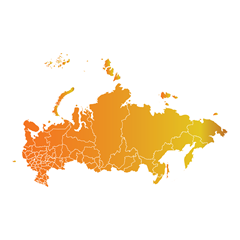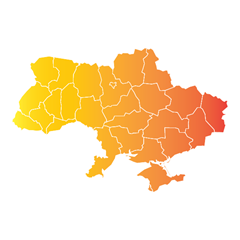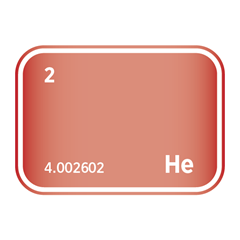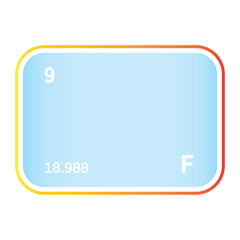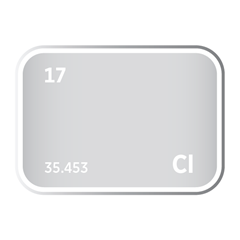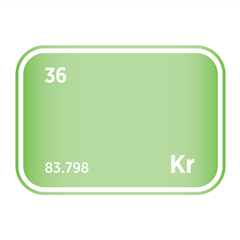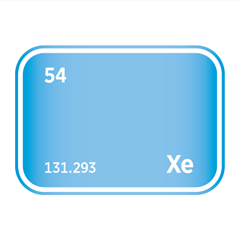Argon
Critical Minerals and The Energy Transition
Navigating the Argon Market
Argon, an abundant and versatile noble gas, is integral to a broad spectrum of industrial, scientific, and commercial applications. Primarily used in welding, argon serves as a shielding gas in TIG and MIG processes, ensuring high-quality welds for industries like aerospace, automotive, and construction. Its importance extends to electronics manufacturing, where high-purity argon is essential for plasma etching and deposition in semiconductor production, supporting the creation of advanced microchips and sensors. Additionally, argon is widely used in energy-efficient insulation for double-glazing windows and in speciality lighting, such as neon signs and high-intensity discharge lamps. The demand for argon is driven by its inertness, affordability, and unique physical properties, yet it is shaped by its reliance on air separation processes and fluctuations in industrial gas production. The argon market faces challenges, including supply chain vulnerabilities tied to energy costs and the need for efficient, high-purity production methods. As industries like electronics, sustainable construction, and advanced manufacturing continue to grow, the argon market is poised to support innovation while addressing the balance between steady supply and evolving demand.
An introduction to argon
Argon demand and end-uses
Argon, an abundant, inert noble gas, is valued for its chemical stability, affordability, and versatile physical properties, making it indispensable across a wide range of industrial, scientific, and commercial applications. Whilst not as scarce or costly as rarer noble gases like xenon, argon’s widespread availability and unique characteristics ensure its critical role in sectors such as welding, electronics, lighting, insulation, and scientific research. Its high demand and diverse end-uses make argon one of the most widely consumed industrial gases globally.
One of the primary uses of argon is in welding and metal fabrication, particularly in TIG (Tungsten Inert Gas) and MIG (Metal Inert Gas) welding. Argon serves as a shielding gas, protecting molten metal from atmospheric contamination, ensuring clean, high-quality welds on materials like stainless steel, aluminium, and titanium. Its inertness prevents unwanted chemical reactions, making it essential for industries such as aerospace, automotive, and construction. As global manufacturing and infrastructure development grow, particularly in emerging economies, argon demand for welding is expected to remain robust.
In electronics manufacturing, argon is crucial for semiconductor production, particularly in plasma etching and deposition processes. Its chemical inertness and low ionisation energy allow precise control in creating nanoscale features on silicon wafers, supporting the fabrication of microchips, memory devices, and sensors. As the semiconductor industry advances towards smaller geometries and more complex architectures, driven by demand for consumer electronics, renewable energy systems, and electric vehicles, argon’s role in high-purity applications is set to expand significantly.
Argon is widely used in lighting, particularly in incandescent, fluorescent, and neon lamps, where it prevents filament oxidation and supports stable glow discharge. Argon-filled bulbs produce reliable, cost-effective illumination, though their use in general lighting is declining due to the rise of LED technology. However, argon remains critical in speciality lighting, such as neon signs, high-intensity discharge lamps, and scientific instruments, where its ability to produce consistent light output is unmatched by alternatives.
In insulation, argon is increasingly used in double-glazing windows to enhance thermal efficiency. Its low thermal conductivity reduces heat transfer, making argon-filled windows a popular choice for energy-efficient buildings and homes. As global construction trends shift towards sustainability and stricter energy regulations, demand for argon in window insulation is expected to grow, particularly in regions prioritising green building standards.
Argon also plays a significant role in scientific and industrial applications. In cryogenics, it is used as a cooling medium for superconducting magnets and as a blanket gas in metallurgy to prevent oxidation during metal processing. In analytical chemistry, argon serves as a carrier gas in gas chromatography and as a plasma source in inductively coupled plasma (ICP) spectroscopy, enabling precise material analysis. Its use in scientific research, such as particle physics and laser technology, further underscores its versatility, though these applications represent smaller volumes.
Looking ahead, argon demand is expected to grow steadily, driven by expanding applications in electronics, energy-efficient construction, and advanced manufacturing. Whilst its use in traditional lighting may continue to decline due to LED adoption, growth in semiconductor production, welding for infrastructure projects, and sustainable building materials will likely offset these losses. Argon’s supply, tied to air separation processes, is generally stable, but increasing demand in high-purity applications could strain capacity if industrial gas production does not keep pace.
With its balance of inertness, affordability, and adaptability, argon remains a vital enabler of industrial and technological progress. From welding critical aerospace components to enabling cutting-edge semiconductor fabrication and enhancing energy efficiency in buildings, argon’s diverse applications ensure its continued importance across multiple sectors shaping the future of industry and innovation.
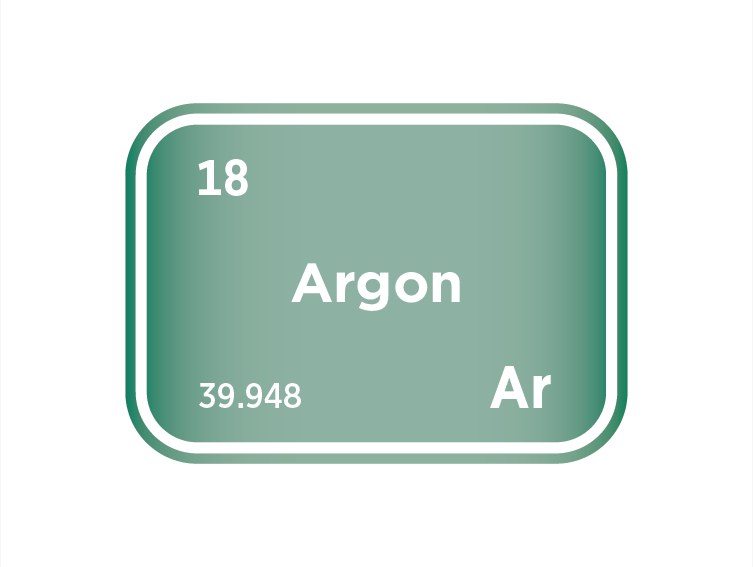
Strategic applications of Argon
Argon supply
Argon supply is relatively stable compared to rarer noble gases, but its availability is still tied to the operational dynamics of air separation and industrial demand. Argon constitutes approximately 0.93% of Earth’s atmosphere, making it the most abundant noble gas, yet it is not mined directly and is only recovered as a by-product during the cryogenic distillation of air. This energy-intensive process, primarily designed to produce oxygen and nitrogen, yields argon through additional rectification steps, often alongside krypton and xenon, in large-scale air separation units (ASUs).
Global argon production is closely linked to the operation of ASUs, which are typically located near high-demand industries such as steel manufacturing, chemical production, and electronics fabrication. Major suppliers, including Air Liquide, Linde, and Air Products, operate extensive networks of ASUs in industrial hubs across the United States, China, Germany, Japan, and India. These regions dominate argon supply due to their robust infrastructure and high industrial gas consumption. Smaller producers in countries like Brazil and South Korea also contribute, but global supply remains concentrated among a few key players.
Argon’s availability is sensitive to fluctuations in oxygen and nitrogen demand, as its production is not independently scalable. During periods of reduced industrial activity, such as economic downturns or maintenance outages at steel plants, argon output can decline, leading to temporary supply constraints. Conversely, surges in oxygen demand, such as during medical emergencies or industrial booms, can boost argon production, though excess supply is rarely stored due to logistical costs.
The argon market is less volatile than that of rarer gases like xenon, but it is not immune to disruptions. Geopolitical tensions or energy price spikes can impact ASU operations, particularly in energy-intensive regions like Europe or Asia. For instance, fluctuations in natural gas prices, which affect the energy costs of cryogenic distillation, can influence argon production economics. Additionally, supply chains for high-purity argon, critical for semiconductor manufacturing and scientific applications, are more vulnerable to disruptions due to the limited number of facilities capable of achieving ultra-high purity grades.
Argon’s wide range of applications, from welding and lighting to electronics and insulation, creates steady but elastic demand. In welding, argon is a staple shielding gas for TIG and MIG processes, with few cost-effective substitutes. In electronics, high-purity argon is essential for plasma etching and deposition in semiconductor fabrication. In insulation, argon-filled double-glazing windows are increasingly popular for energy efficiency. Whilst demand is generally predictable, rapid growth in sectors like renewable energy or electric vehicle manufacturing, which rely on advanced electronics, could strain supply if ASU capacity lags.
Unlike rarer noble gases, argon is not typically considered a strategic resource, and formal stockpiling is uncommon. However, its dependency on oxygen and nitrogen production means supply can be indirectly affected by shifts in industrial priorities or energy markets. Secondary supply through recycling is technically feasible, particularly in semiconductor manufacturing, where argon is used in controlled environments, but large-scale recycling infrastructure remains underdeveloped due to cost considerations.
Looking ahead, argon demand is expected to grow modestly, driven by expanding applications in electronics, energy-efficient construction, and advanced manufacturing. The semiconductor industry’s transition to smaller nodes and more complex processes will increase reliance on high-purity argon. Similarly, the push for sustainable building materials will bolster demand for argon in window insulation. To meet these needs, investments in ASU efficiency, regional diversification of production, and enhanced argon recovery techniques will be critical to ensuring a resilient global supply.
Argon producers
Argon substitution
Substitution for argon is feasible in some applications, but challenging in others due to its unique combination of inertness, affordability, and physical properties like high thermal conductivity and low ionisation energy. As a noble gas, argon is widely used in welding, lighting, insulation, and industrial processes, but alternatives often compromise performance, cost, or safety.
In welding and metal fabrication, argon is the preferred shielding gas for TIG (Tungsten Inert Gas) and MIG (Metal Inert Gas) welding due to its inert nature and ability to protect molten metal from atmospheric contamination. Alternatives like helium or carbon dioxide are sometimes used. Helium, whilst effective, is significantly more expensive and less dense, requiring higher flow rates. Carbon dioxide, often mixed with argon for cost savings, can increase spatter and reduce weld quality for certain metals like aluminium or stainless steel. Nitrogen is occasionally used for specific applications, but it can react with some metals, limiting its versatility.
In lighting, argon is used in incandescent, fluorescent, and neon lamps to prevent filament oxidation and enable stable glow discharge. Krypton or xenon can substitute in high-performance lamps, offering brighter light or longer lifespan, but both are far costlier. Nitrogen or vacuum-based systems are cheaper alternatives in low-end applications, but reduce efficiency and light quality. LED technology, whilst increasingly dominant, cannot fully replicate argon’s role in speciality lighting like neon signs or high-intensity discharge lamps.
In insulation, argon-filled double-glazing windows provide excellent thermal insulation due to its low thermal conductivity. Krypton offers superior insulation, but is prohibitively expensive for widespread use. Air or nitrogen can be used as low-cost substitutes, but they significantly reduce thermal efficiency, increasing energy costs over time.
In industrial and scientific applications, such as plasma etching in semiconductor manufacturing or as a carrier gas in chromatography, argon’s low reactivity and ionisation properties are critical. Helium or neon can sometimes substitute, but helium’s scarcity and neon’s high cost limit their practicality. In some plasma processes, nitrogen or oxygen may be used, but they introduce reactivity that can damage sensitive materials.
In cryogenics and cooling, argon is used to cool superconducting magnets or as a blanket gas in metallurgy. Liquid nitrogen is a common alternative due to its lower cost and availability, but it requires different handling and storage conditions, and its lower boiling point may not suit all applications.
Overall, argon’s widespread use stems from its balance of inertness, availability, and cost-effectiveness. Whilst substitution is possible in many cases, helium in welding, krypton in lighting, or nitrogen in insulation, alternatives often lead to trade-offs in performance, cost, or process compatibility. As industries prioritise efficiency and sustainability, argon’s role remains difficult to fully replace without advancements in materials or process technologies.



Meet the Critical Minerals team
Trusted advice from a dedicated team of experts.

Henk de Hoop
Chief Executive Officer

Beresford Clarke
Managing Director: Technical & Research

Jamie Underwood
Principal Consultant

Dr Jenny Watts
Critical Minerals Technologies Expert

Ismet Soyocak
ESG & Critical Minerals Lead

Thomas Shann Mills
Senior Machine Learning Engineer

Rj Coetzee
Senior Market Analyst: Battery Materials and Technologies

Franklin Avery
Commodity Analyst

How can we help you?
SFA (Oxford) provides bespoke, independent intelligence on the strategic metal markets, specifically tailored to your needs. To find out more about what we can offer you, please contact us.





































